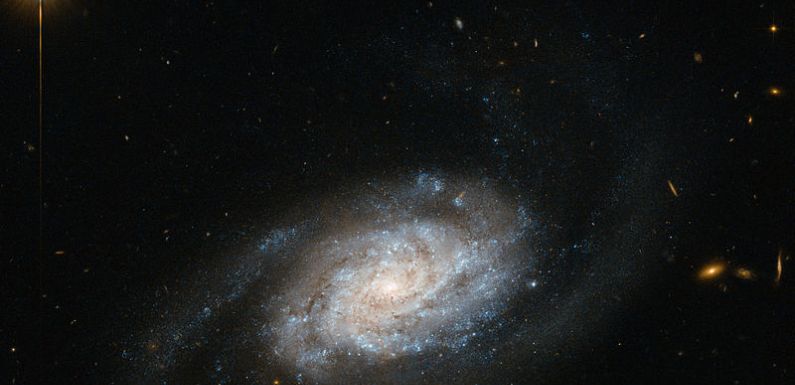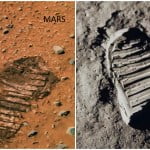
In space, everything seems abstract since we are always facing large distances and objects. But, ever wondered what are actually the biggest things our universe has? Earth is definitely not.
Even our sun looks like a midget in comparison with much bigger stars. The Sun is a G-type star, a yellow dwarf, with an average size.
In the universe’s overabundance of stars, there are much larger, so-called hypergiants. Namely, the biggest star – UY Scuti can host an incredible number of 1,700 suns.
However, the margin of error is around 192 sun-widths, so, if error, UY Scuti would rank down a few places.
UY Scuti is only about 30 times heavier than our sun. Therefore, we can conclude that mass and size don’t certainly associate in space.
Next, to our biggest things in the universe list are the black holes. Particularly, the supermassive black holes that usually rest in the galaxy’s heart.
For instance, our Milky Way accommodates one that is about 4 million times the mass of the Sun.
One of the biggest supermassive black holes in the history rests on NGC 4889, which has a black hole approximately 21 billion times the mass of the sun.
But, guess what? There are even things bigger than the supermassive black holes. We have galaxies too.
Galaxies are groups of star systems and everything those systems include. Chiefly, planets, stars, asteroids, comets, gas, dust and more.
Our Milky Way is around 100,000 light-years across. But, let us remind you of what a light year is, according to NASA. A light-year is the distance light travels in one year.
Equally important is to realize that galaxies don’t have specific borders, thus, it’s difficult to define which ones are the largest.
However, the largest galaxies we are aware of are millions of light-years across. One of them is IC 1101, which is 50 times the Milky Way’s size and about 2,000 times more massive. Furthermore, it’s 5.5 million light-years across.
Nebulas, or vast clouds of gas, also have seriously large sizes. NGC 604 in the Triangulum Galaxy is considered as one of the largest. It’s about 1,520 light-years across.
At first sight, astronomers believed these structures are the biggest things in the universe.
This was their opinion until the 80’s when they discovered that groups of galaxy clusters also join by gravity in a supercluster.
What is the biggest supercluster?
The biggest supercluster we are aware of is the Hercules-Corona Borealis Great Wall. It was discovered in 2013 and since then it was examined numerous times.
It is impressively big that takes about 10 billion years to move across the structure. Take the universe as your viewpoint, it’s old only 13.8 billion years.
Istvan Horvath of the National University of Public Service in Hungary first discovered this structure while looking at cosmic phenomena known as gamma-ray bursts.
Gamma-ray bursts are considered as a good sign of huge masses of things in the universe because big stars likely converge in dense areas.
The first study showed gamma-rays particularly concentrated about 10 billion light-years away in the direction of the Hercules and Corona Borealis constellations.
However, it still remains a mystery how big this structure came to be. Namely, a 2013 article from Discovery explained this structure goes against all the principles of cosmology.
“I would have thought this structure was too big to exist. Even as a coauthor, I still have my doubts,” said Jon Hakkila, an astronomy researcher at the College of Charleston in South Carolina.
He said there was a very small probability the researchers to see a random number of gamma-rays in that location.
“Thus, we believe that the structure exists. There are other structures that appear to violate universal homogeneity: the Sloan Great Wall and the Huge Large Quasar Group … are two. Thus, there may very well be others, and some could indeed be bigger. Only time will tell,” he added.
There are large objects in our solar system too.
While our solar system looks totally tiny compared to the Hercules-Corona Borealis Great Wall, we present you the list of some of the biggest things there.
- Largest planet: Jupiter, roughly 88,846 miles at its largest diameter, which is about 11 times the diameter of the Earth.
- Largest moon: Ganymede, which coincidentally orbits Jupiter, is roughly 3,273 miles in diameter and is a little larger than the planet Mercury.
- Tallest volcano: Olympus Mons on Mars, around 15 miles high and three times the height of Mount Everest on Earth. (Olympus Mons is also considered the highest mountain.)
- Largest canyon: Valles Marineris on Mars, more than 1,865 miles long, 370 miles across, and 5 miles deep.
- Largest crater: Utopia Planitia on Mars, which has an estimated diameter of 2,050 miles. It was the landing area of the Viking 2 spacecraft in 1976.
- Largest asteroid: 4 Vesta, which is 330 miles across. It is located in the asteroid belt between Mars and Jupiter.
- Largest dwarf planet: Pluto is the largest dwarf planet, with a diameter of 1,473 miles.









